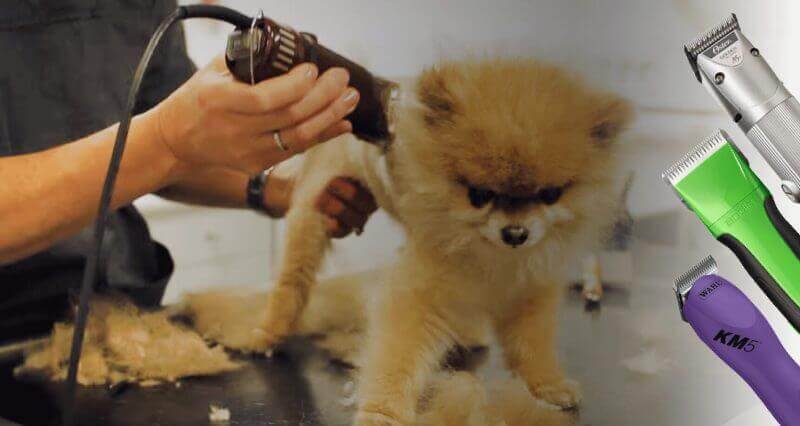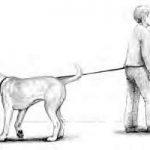- Discovering what it takes to start your own grooming business
- Finding out what kind of certifications you need
- Setting up shop
- Attracting and keeping new customers
You’ve been grooming your dog for some time and find that you really enjoy doing it. And while helping your friends groom their dogs, too, maybe they’ve handed you $20 or so to keep Fifi looking great. Everyone says you ought to turn pro, but should you?
Then again, maybe you’re looking for a career move. You like working with dogs, and you’ve heard that you can earn a pretty decent wage grooming them. Maybe the idea of being your own boss sounds appealing, but how do you go about it?
In this chapter, I tell you what it’s like to turn pro and to start your own business in the field of dog grooming. You’ll find out various pitfalls of working for yourself, and I help you determine whether you really can do it.
Deciding Whether Professional Grooming Is Right for You
Now that you’ve honed your dog grooming skills, you’re finding that the oohs and ahhs recognizing your beautiful dog are turning to dollars and cents. The word is spreading, and those neighbors who once slipped you some cash for doing a good job taking care of their pooches now are telling all their friends about you. You’re almost there, right? You’re almost in business for yourself.
Tallying up how much groomers makeArguably, you can make pretty good money as a pet groomer. In a 2004 survey of more than 3,000 respondents, PetGroomer.com found that 31 percent of respondents made $30,000 to $50,000 a year, and 40 percent made $50,000 to $75,000 a year. Twelve percent made less than $30,000, and 17 percent made more than that in gross business earnings. These amounts don’t account for business expenses, but 60 percent of the groomers who were self-employed said they made between $20,000 and $40,000 before taxes and after business expenses. |
Well, almost. However, running a business is a bit more than hanging out a shingle and setting up shop. You must deal with customers, marketing, and with rules and regulations governing businesses. And, of course, you need to know about the liabilities associated with opening your own business. But first, you need to check out all the pros and cons of owning your own business.
Weighing the pros and cons of starting a grooming business
Owning your own business can be a dream come true or a nightmare, depending on your willingness to work and your entrepreneurial spirit. Here are some valid reasons for wanting to own your own grooming business:
- You like being your own boss.
- You like setting your own hours.
- You hate having your paycheck limited by a boss or a company.
- You want to have control over your success (and failure).
- You want the freedom to work when you choose and where you choose.
- You can choose who you work with.
- You enjoy challenges.
- You love working with and meeting people and dogs.
Many other reasons exist for becoming a business owner, but the ones in this list are the main ones.
Just as there are positives for becoming a business owner, here also are some of the negatives to owning a business:
– Cash flow typically is uncertain and can be unsteady.
– Someone (you or someone you hire) needs to do the bookkeeping chores and pay taxes.
– Your income must be reported to the IRS, and you’re double-taxed for Social Security.
– You need to work long hours, lift heavy objects (dogs included), and risk possible injury.
– You run the risk of being bitten — not all dogs are nice.
– You may have to deal with snarky or downright rude pet owners.
– If you’re sick or take a vacation, nobody is paying you.
– You must have investment or start-up capital (money) to get your business off the ground. Depending on the type of business, it can run a few thousand to several thousand dollars.
– Bad things happen to businesses all the time, which are not your fault: burglaries, disasters, or other problems can mean lost money and time.
– You have to maintain insurance coverage and pay proper bonding fees because you may be sued for injuring a dog or for other business practices.
– You have to work not just with dogs but also with their owners — and that isn’t always pleasant.
– The first year is often low pay or no pay, so you have to stay motivated, even during lousy times when the business isn’t doing so well.
– You have no safety net — you either sink or swim.
You may be thinking, “Wow, that sure is a bunch of negatives,” and you’d be right. That’s why not everyone owns their own business, but instead some choose to work for someone else or another company.
Considering whether you’re ready to be the boss
Before you get too embroiled with the thought of having your own business, you need to find out whether you have the time, money, and ability needed to start a business.
If you’re currently unemployed, time isn’t so much a factor, but if you have a full-time day job, planning to start a grooming business on the side may take up what little time you have left.
Money is a requirement, too. Can you get the loans necessary to start your business from a bank? Or do you have enough cash stockpiled? Or maybe you have friends or family willing to invest in your business? In most cases, you’ll need thousands of dollars to get started.
Where are you planning to work in your grooming business? Out of your home? In a separate shop someplace? Or are you going to be a mobile groomer? The cheapest (and most inconvenient) is to work from home, but doing so can have drawbacks, such as obtaining the proper zoning and deciding whether your neighborhood permits home-based businesses. A separate shop costs quite a bit in rent and refurbishing, and a mobile salon requires at least a van or an SUV with enough room to carry all your supplies.
Foremost, starting a business and working for yourself take a mind-boggling amount of effort. Taking a day off here and there is fine, provided you have the money to carry you through. However, when you own your own business, you can’t just call in sick on a day when your schedule is filled with customers. And don’t forget the paperwork, the taxes, and of course, dealing with clients. When you’re the boss you have to wear many different hats.
Evaluating the need in your area
This question may seem a little strange, but even if you have the ability and the money to start a new business, should you? Part of being successful in a business is fulfilling a need. First you need to assess where you intend to operate your business to find out whether a market exists for your services and whether much competition already exists there. If several groomers are in your area, you need to determine whether there’s room for another one.
Tip
Check out the Yellow Pages or an online directory to search for dog groomers and see who is working in your area. If you find fewer groomers than you’d expect, then perhaps the time is right to start a business in the area. If not, perhaps you need to look for a business owner nearby who is looking for help.
The other problem is if there are lots of groomers in your area, you may be forced into a price structure that is comparable or at least competitive with what is out there. If fact, you may have to offer lower rates to entice pet owners to use your business when there are established businesses in your area.
Sometimes pairing yourself with a veterinarian or a pet supply store can help get your business off the ground. Although you may have to sacrifice some money that you’d normally make, you nevertheless develop a clientele that you may be able to take with you if you choose to open up your own shop.
Warning!
A perceived lack of groomers may signal another problem. In some places, dog owners may consider that grooming is just for froufrou dogs or a luxury they can’t afford. Do your research and find out before investing time and money in a business that no one wants to patronize.
Training
You may have heard that you need to be certified to groom dogs professionally. Actually, you don’t have to be certified to be a groomer or open a grooming business, but certification looks good to savvy customers and ensures that you’re up-to-date with the latest techniques.
But to be able to consider yourself a professional groomer, regardless of whether you’re certified, you need to hone your skills through training that you can get nearly anywhere. You can be self-taught, learning grooming skills by working on your own, your friends’ and other people’s dogs; you can be hired on with another groomer who’s interested in getting some help in exchange for teaching you how to groom; or you can attend a formal grooming school or take correspondence courses. The sections that follow weigh the pros and cons of each training option.
Remember
No training method alone is better than another. How you develop your skills depends on how much time and effort you put into improving your skills and your willingness to learn the trade.
Heading back to school
If you’re serious about diving headlong into becoming a professional groomer, you can take grooming classes at a grooming school. Grooming schools provide major advantages, but they also have some disadvantages. The advantages are that you can
– Learn grooming in a hands-on, structured environment.
– Learn the trade from the pros who are intent on teaching you how to groom a pet properly and safely.
– Focus on classes you want to take in addition to the basic instruction.
– Receive feedback. You know how well you’re doing or whether you need to work harder.
– Earn certifications from some of the schools, or you can at least earn a diploma.
– Discover how to be a pro groomer in a definitive amount of time.
The disadvantages of grooming school are that they’re
– Costly. Most schools are pretty expensive. Some have financial aid for students.
– Not always conveniently located. If one isn’t close by, you have to either move or at least spend some time at the school, thus uprooting your household.
– Not always easy to attend while working a second job.
– Schools. Remember tests? Lectures? More tests? Long hours of studying?
– Competitive. You may be surprised to know there’s a fair amount of pressure to do well.
Okay, so you’re convinced school is the way for you to go. Now, where do you find good grooming schools? You can contact:
– The National Dog Groomers Association of America (NDGAA), www.nationaldoggroomers.com, 724-962-2711.
– International Professional Groomers (IPG), www.nanhall.com/grmipg.htm, 847-758-1938.
– International Society of Canine Cosmetologists (ISCC), www.petstylist.com/ISCC/ISCCMain.htm, 972-414-9715.
– PetGroomer.com, www.petgroomer.com.
Tip
If you want your schooling to include certification of your grooming skills, check out the first three Web sites in the previous list. They explain what certification is, offer programs aimed at certification, and tell you where and when you can take grooming certification exams.
Another way you can find a grooming school online is to use DexOnline.com or search for “schools” on a favorite Web search engine.
Going to school isn’t a picnic, so if you decide to follow this route, be sure the school you attend is the right one for you. Here are some questions to ask:
– Is the school licensed and accredited? If so, by whom? Schools that are licensed and accredited are likely to give you good training and not be a rip off.
– Do graduates of the program receive certification or diplomas after successfully completing the course?
– Does the school teach grooming only for dogs or does it incorporate the grooming needs of other pets?
– How long does it take to complete the coursework?
– How long has the school been in existence?
– Who teaches the classes? What credentials do they have? Can you talk to the teachers?
– How much is tuition? What other purchases do you have to make?
– Can the school provide any references (graduates, groomers, teachers, and so on)?
Tip
Ask other groomers you know whether they’ve heard of the school and what its reputation is like. You don’t want to spend a lot of money only to find out that your diploma isn’t worth the paper it’s printed on.
Taking correspondence courses
Correspondence courses are another way to get training. They are much like teaching yourself, except that you usually have a mentor or someone whom you can ask questions and give you appropriate feedback. You’ve probably seen commercials on TV for courses such as Thomson Education Direct (
www.educationdirect.com, 800-275-4410). I actually wrote a couple of course books on its Dog Trainer/Obedience Instructor courses, so I know a little bit about them. Other correspondence schools are out there, but before you choose one, make sure that it’s licensed and accredited.
Many correspondence courses make use of booklets, tests, and videos. The downside to these courses, however, is that you don’t get the hands-on training that a regular school environment provides. By the same token, correspondence courses enable you to learn at your own pace.
Taking a correspondence course has its own distinct pros and cons. The positive sides are – Taking the course in your spare time, without quitting your current job or leaving home.
– Getting feedback through tests and other evaluations (you usually send in videos and photos for evaluation).
– Avoiding travel to faraway grooming schools.
– Learning at your own pace.
– Receiving a certification and sometimes accreditation when you complete the course.
– Having someone to ask questions, get advice from, and in general, serve as your mentor while taking the course. In many correspondence courses, some schools have on-staff experts who are available via phone and e-mail for consultation.
The downsides of correspondence courses are that they:
– Lack a teacher. Not having anyone to actually teach you can be rough.
– Can be expensive.
– Take longer than if you were trained at a school.
– May let you fall through the cracks; your mistakes may not be caught.
– Rely on testing that can put (undo) pressure on you.
– May not be reputable nor prestigious.
Warning!
The biggest downside to correspondence courses is finding out whether they’re truly reputable and legitimate. After all, you don’t want to spend a boatload of money and have nothing to show for it. Ask around.
Tip
One place to look for correspondence courses is on PetGroomer.com (www.petgroomer.com).
After you compile a list of correspondence courses, call them up and ask questions. Here are some questions you may want to ask:
– Are the courses licensed and accredited? If so, by whom?
– Do you receive certification or diplomas after successfully completing the course?
– Do the courses apply only to dog grooming or do they incorporate grooming needs of other pets?
– How long does it take to complete the coursework?
– How long has this correspondence course existed? How long has the school been in existence?
– Is the school a member of the Better Business Bureau? (If so, contact the BBB and ask about complaints.)
– Who wrote the courses (what are their credentials)? Were they written by one or several professionals?
– Can the school provide any references (graduates, groomers, teachers, and so on)?
You may also want to ask any professional groomers you know whether they’ve heard of the correspondence course and what their opinions of it are.
Working for an established groomer
Nothing is like hands-on experience when it comes to learning how to do something. What better way to find out about grooming than to work for a professional groomer who can show you the ropes?
Finding a groomer who’s willing to take you on may be as easy as walking into a grooming shop or answering a want ad. If you currently have a groomer, she may be a good place to start. Otherwise, you may have to get a little more creative. Asking veterinarians or dog trainers in your area may turn up something.
Working for a groomer has its benefits and pitfalls. Some of the benefits are:
– Getting to watch a professional groomer at work using all the techniques that you’re hoping to learn.
– Having someone watch over you and show you new skills and point out when you’re doing something wrong.
– Earning money while you learn.
– No real studying; just hands-on experience.
– Having someone to ask questions and get advice.
The downsides to working for a groomer are:
– Low pay. Need I say more?
– Scut work. You may be relegated to cleaning floors and tubs and other dirty jobs.
– Poor or inflexible hours. You’re working according to a schedule someone else has dictated. It’s a job, and you have to treat it as such.
– More scrutiny. When you mess up, the groomer may not look so kindly on you. After all, you’re affecting her business!
– Less of an opportunity to do actual grooming than you expect. You may not get to watch the groomer groom dogs because you’re so busy cleaning crates or mopping the floors. Granted you’ll see the whole side of grooming, but you may not learn as much as you’d hoped.
– You can have personality clashes with the groomer.
Warning!
Quitting a high-paying position to go to work for a groomer in an entry-level, minimum wage job can be devastating, especially if you find out that you’re not really cut out for grooming. Also, be aware that if you do work, you must be paid. That’s an employment law in the United States. You must be paid at least minimum wage for each hour you work. Don’t let anyone trick you into thinking that this kind of work is an internship for which you don’t get paid. If you work, you get paid.
Home-schooling yourself
One of the ways you can learn about dog grooming is to teach yourself. It’s a fairly inexpensive method. You buy some books, and you practice on your dog and your friends’ dogs to find out how to do some techniques.
The positives of home schooling are that you:
– Teach yourself in your spare time without quitting your current job or leaving home.
– Don’t have to take any tests and have no real pressure.
– Don’t have the expenses associated with attending school or taking a correspondence course. You learn by reading books, watching videos, and trying the techniques out on your dog.
– Avoid travel to faraway grooming schools. Home schooling is good for folks who live in the country where groomers may be rare.
– Learn at your own pace.
– Create your own well-blended education by being able to learn from many different books and methods.
The downsides of teaching yourself are that you:
– Have no one to show you whether you’re doing something wrong.
– Won’t have the opportunity to work on as many different breeds and different dogs as you would in a school environment.
– Can’t rely on an expert being close at hand to answer your questions.
– Won’t receive any accreditation or certification.
– Take more time than if you trained with a school.
Getting Down to Business
Opening a dog-grooming business, regardless of whether it’s in your home or in a shop at one of the local strip malls, means that you must take care of some legal matters, such as choosing just how you want to operate your business.
Choosing how to set up your business
You must choose between three ways that you can operate as a professional groomer. You can do business as a sole proprietor, as an incorporated entity, or as a limited liability company. All three have advantages and disadvantages.
Tip
Before you embark on any business endeavor, however, you need to seek the advice of an accountant or perhaps even an attorney who is familiar with setting up businesses.
Stepping out on your own as a sole proprietor
A sole proprietorship is the easiest way to start a business, but it’s also the most risky. In essence, you hang out your shingle and get paid by customers. The money you make is yours to keep, and you don’t have to mess with separate tax identification numbers and whatnot. What could be easier? Well, read on.
Warning!
The downside to opening for business as a sole proprietorship is that anything that you do wrong can make your personal assets (the house, the car) vulnerable. Lawsuits will be aimed directly at you and not against an entity like a corporation.
Big business: Incorporating
The second way you can operate your grooming business is as a corporation.Various types of corporations exist, but for the moment, I’ll discuss the S Corporation. Many small businesses are S Corporations, because operating as one provides good protection, and the business entity can be sold, if need be.
The downside to incorporating is contending with the paperwork and the number of hoops you must jump through to get one started. Keep in mind that some types of corporations can be taxed more than individuals, so be sure that you talk to your accountant before deciding whether and how to incorporate.
The limited liability company
A fairly new way of doing business, the limited liability company (LLC) blends together parts of doing business as a corporation and as a sole proprietor. An LLC enables one or two people to operate a business like a sole proprietorship in some ways and like a corporation in others. However, because not all states recognize LLCs and not all LLCs are the same, be sure to talk to someone who’s experienced at setting one up before you decide to take this route with your grooming business.
Creating a business plan
When you start thinking about operating a business, you need to put together a business plan. All successful businesses have one, and even a vague plan is better than no plan at all. By putting down where you want to go and choosing the methods you’ll use to get there, you’ll be ahead of your competition.
For example, your business plan needs to specify what type of grooming business you want to open. It needs to say whether you’re operating:
- A home-based business where you groom out of your home.
- A standalone grooming business usually with only one groomer.
- A small to medium business with employees who groom.
- A mobile grooming business.
- A business adjacent to a veterinarian, training facility, boarding kennels, or pet supply store.
Think about which type of grooming business you’d like and determine whether you’d like to offer other services, such as training, boarding, or supplies. The clearer you are about what your business will be, the more successful you’re likely to be.
An accountant can help you formulate a business plan, or check out Business Plans For Dummies by Paul Tiffany and Steven D. Peterson (Wiley) for more information.
Securing licensing
Currently none of the 50 states in the United States require groomers to be licensed. In fact, anyone can become a professional groomer as long as he or she fills out the right forms. It’s as simple as opening up a shop and hanging out a sign.
Depending on the type of business you choose to operate (see the earlier section on “Choosing how to set up your business”), you’ll have to fill out the appropriate business forms, and if your state requires service and sales-tax licenses, you’ll have to apply for them. Beyond that, you may want to check with your state government to find out about any requirements to which professionals who work with animal professionals must adhere.
Paying taxes
One downside of working for yourself is that you must pay your own taxes rather than having your employer withhold them for you. So you need to get in touch with an accountant who can explain quarterly tax filings and payments and provide other information about dealing with the IRS.
Now that you’re self-employed, your social security tax (FICA) is twice the amount you paid before. Why is that? Because before you were self-employed, your employer paid the same amount you did. When you become self-employed, you get hit with the entire tax.
Setting Up Shop
You have your training, applied for your business and sales licenses, checked with your accountant and attorney, and now you’re ready to set up shop. What next? Read on!
Finding a workspace
Where you plan to operate your grooming business is the most important decision you need to make as you set up shop. You have a few choices, including in your home, as a standalone shop, or in conjunction with another business?
Working at home alone
Many first-time groomers set up shop right out of their homes, but before you hang out your sign, you need to understand the zoning of your home and how local ordinances affect a home-based business in a residential area. No matter how good of a neighbor you are, some nosy busybody neighbor is going to take an interest in the customers showing up at your doorstep. And if you’re violating any covenants or ordinances, you’re bound to have your homeowners’ association or the county zoning officer show up at your front door.
Technical Stuff
Ordinances and covenants are enacted for specific reasons. The most obvious reason is traffic and congestion. Although you may have only a client or two show up every day, think of what would happen to your street if everyone was running businesses out of their homes. Your quiet, sleepy suburban neighborhood would quickly devolve into a busy thoroughfare. Well, maybe not. But that’s how the zoning commissions and homeowners’ associations see it.
Assuming that you can get around the zoning and covenant problems, working out of your home can be a hassle unless you have a separate shop. Do you have enough parking for customers? What about access for folks with disabilities? Yes, the Americans with Disabilities Act applies to your business, too.
Although working from home can be wonderful, it can also be terribly distracting. Your family and friends can pop in and make demands on the time you’d otherwise be devoting to working on a customer’s dog — you know, making money. Then there’s the TV and the gallon of ice cream in the fridge . . .
And don’t forget about the client who’s late picking up the dog while you’re left waiting with the pooch until the owner shows up. However, by the same token, you can also throw in a load of laundry or start dinner, if a client turns out to be a no show — and believe me that will happen.
If you become successful as a groomer, at some point, you’ll be looking either to expand your shop inside your home or have to find another place to work.
A shop of your own
In most cases, situating business where your homeowners’ association and zoning officers won’t nag you — someplace where it’s allowed — is best. Your kids will just have to make a special trip (or call you) when you have your own shop, and there’s no ice cream in the fridge unless you really want it there.
Another great reason for having a separate shop is for tax purposes. By having a place of business outside of your home, you can deduct all operating expenses and prove to the IRS that you’re truly operating a business — something that’s pretty hard to do working from home.
Where you put your separate shop is important. You need to look for a place that’s in a busy area (like a strip mall) where no other groomers are present. A veterinarian’s or a pet-supply store, on the other hand, is a bonus. Although the areas I mentioned are prime locations, they’re often accompanied by prime costs. The point is you need to be in an area where people can see your business.
Warning!
Be careful about getting a bargain location that’s out of the way and off the beaten path. A place that doesn’t get much traffic can spell disaster for a new business. You can choose to move to a less trafficked site after you’ve established a good client base.
Sharing the load
What if you just don’t have the investment capital for opening your own shop? Believe it or not, you still have options that will allow you to remain self-employed, including:
– A mutual arrangement: Having a standalone business can be costly, so if you don’t have the investment capital to open your own business or rent a shop, try asking a veterinarian, a pet-supply store, or other pet-oriented business whether you can rent space from them to do grooming. Such an arrangement can be mutually beneficial to both parties. You benefit by having a place to do your work and from customers you gain through the regular patronage of the business, and the business benefits from the rent you pay and from being able to provide yet another added service to its customers.
Tip
This type of arrangement is wonderful for a startup groomer, because it provides an instant client base. Anyone who walks into the business is automatically a potential customer for you.
– Contract grooming: Another possibility is freelance work in someone else’s grooming shop. Instead of being a direct employee of the groomer, you work on a contractual basis, meaning the shop owner gets a cut out of what you get paid. Say, for example, that the shop owner takes 20 percent of your earnings. If you charge clients $30 for bathing their dogs, you get $24, and the shop owner gets $6. Just make sure that when you enter this type of arrangement that you have all of details worked out in writing.
On the go: Mobile grooming
Like setting up a grooming shop, mobile grooming is a big investment. You need a van, RV, or SUV that’s been converted to handle grooming. On the low end, a grooming van carries your equipment and maybe a portable tub and water heater. On the high end, your grooming vehicle can be a retrofitted van or RV complete with a grooming tub and all the accoutrements you need. The latter can cost anywhere from $30,000 to $75,000.
The biggest advantage of mobile grooming is that you go where your customers are, which is ideal for people who can’t get out, people who lead busy lives, and people who live in areas where groomers are few and far between. What’s more, you can charge premium prices because of the service factor.
Warning!
Be aware that gasoline prices can severely affect your bottom line. Although other groomers may charge $35 to $50 for a complete grooming session, you may have to price your services from $40 to $70 or more to cover your traveling expenses, including gas. And while you may not have rent or utilities to pay, you may have a big truck finance and insurance payment every month.
Obtaining insurance and bonding
Making sure your new business is properly insured and that you’re adequately bonded are a couple of the first things you need to do before you open your shop. Not only do you need insurance on your property for fire, theft, and other catastrophes, but also for liability. What if Fluffy bites Mrs. Smith? What if she then slips and falls in your shop and breaks a hip? Having enough liability insurance to cover you, your workers, and your customers is vitally important.
Bonding, or the monetary guarantee that you’re a trustworthy individual and won’t steal or damage something important to the client like a pet or other property, is another assurance you may want to obtain. You’ll probably want to consider being bonded, especially if you’re going to other people’s homes to groom their dogs.
Ask an insurance representative for an evaluation of what your business needs in terms of insurance and bonding.
Warning!
Be aware that if you have a home-based business, it won’t be covered by your homeowner’s policy if something happens. Get business insurance. It’s worth it.
Purchasing supplies and equipment
If you’re wondering what to do after you open your business, consider that money probably will be pretty tight, especially after you just laid down a huge chunk of change to rent a building or buy a mobile grooming salon. You’re not going to feel like paying those high retail prices for supplies that you use everyday, so . . .
The good news is that you don’t have to spend a lot. Now that you’re a business, you can buy supplies and equipment wholesale from distributors. Just look for pet-supply distributors in the Yellow Pages, hop online and purchase your supplies from places like PetEdge (
www.petedge.com), or look through groomer trade magazines like
Groomer-to-Groomer (
www.groomertogroomer.com).
There are also grooming seminars and trade shows around the country that offer hands-on demos and display every imaginable piece of grooming equipment known or sold to professional groomers. You can ask vendors and company reps all the questions you want. Plus the prices are reasonable. One place to find show listings is at the GroomTeam USA Web site (
GroomTeamUSA.com).
You should probably buy the best equipment and supplies you can afford now to avoid problems in the future. But high cost doesn’t always equal high quality. Shop around!
Warning!
When mail-ordering supplies either from catalogs or off the Internet, be careful. The savings you get on the price may be eaten up by shipping costs. Likewise, be sure that the company you’re buying from is reputable.
Tip
You can buy your business supplies at places like Office Depot, Office Max and other big box stores that now cater to businesses. Take a look at Costco and Sam’s Club, too. Although you won’t find many grooming supplies there, you can find other essentials like cleaners, mops, and containers at cheaper prices than you’d normally buy them.
Getting the word out: Marketing
In the business of dog grooming, marketing is everything. Your customers won’t be your customers unless they can find you.
Word-of-mouth is the best kind of marketing to which any business can aspire, but until you actually attract customers who can rave about your work, you’re pretty much stuck with marketing yourself.
An excellent book to consider when you’re looking for extra help with promoting your new business is Small Business Marketing For Dummies by Barbara Schenck (Wiley). Another series worth looking into is the Guerilla Marketing series by Jay Conrad Levinson (Houghton Mifflin).
The sections that follow look at some of the ways that you can attract customers.
Tip
No matter which advertising strategy you decide to use, always ask your newfound customers how they heard about you and your business. In fact, you need to keep a log of how successful your marketing strategy has been. After a few months, you’ll begin to see a pattern that tells you what’s working and what isn’t.
‘Let your fingers do the walking’
Yes, the Yellow Pages are expensive, but where’s the first place you turn to when you look for something — anything? If I’m looking for a specific business (especially something that’s local), I either reach for the Yellow Pages or check DexOnline.com (
dexonline.com), which is an online type of Yellow Pages. Anymore, it’s almost as if I’ve been programmed to use these tools.
I bet you do that, too. The ubiquitous Yellow Pages have been part of society for a long time. It’s a marketing tool, albeit an expensive one to advertise in. If you can at least get your business listed in the Yellow Pages under pet groomers and afford to buy a small box ad, many people will look at it. Having an ad in the Yellow Pages also makes you look more established than just someone with a single line.
Placing ads in local newspapers and circulars
Another way to attract attention is to place ads in local newspapers and circulars. Doing so has pluses and minuses that you need to consider. On one hand, your ad reaches the number of people that make up the publication’s circulation, but on the other hand, whether you reach the right customers is debatable. Sure, the circular says it reaches 55,000 homes, but how many people actually open it up and read your ad as opposed to just tossing it away as a bit of junk mail? And, for that matter, how many people have pets who need grooming.
Other than the cost, there’s no real harm in trying one or more of these ads. Some local newspapers are read voraciously by consumers. Others are simply ignored. In the town where I live, people always look at freebie ads in a newspaper format. If you want to find a local business, that’s where you look.
Direct-mail advertising
Direct mail probably is the least effective form of advertising — somewhere between 0.5 percent to 2 percent of business is generated by direct-mail marketing. It’s also somewhat costly — printing, postage, and mailing can amount to quite a sum. So if you mail your ad to 5,000 households, the best you can expect is 25 to 100 inquires. Obviously, the more households to which you send direct mail, the more customers you’re likely to snag — but watch that postage meter.
Internet advertising
In this day and age, businesses without Web sites are left in the dust. Posting a Web page or at least a personalized URL is dirt cheap. In fact, if you have access to the Internet, your Internet service provider (ISP) may already provide a free Web page for you.
Having a Web site is a great way to attract customers and to announce coupons and specials. If you have a flair for writing articles and providing information (or you know someone else who does), you can direct your customers to read this free information (known as content). If they enjoy it, they’ll pass along the information and links to your Web site to their friends. It’s an easy way to get customers.
You can also create e-mail lists of your current customers, so you can keep in touch with them and let them know about current promotions. Plenty of e-mail list services can assist you. Yahoo! Groups (
www.groups.yahoo.com) provide free LISTSERVs, that is list services that provide e-mail groups.
Warning!
Never send out unsolicited advertising e-mail (Spam) hoping to attract clients. Not only will you tick off your potential clients by spamming them, you’re also likely to be marked as a spammer, which may cause you to lose your Web site and e-mail privileges if it’s reported to your ISP.
Posting flyers
Another way to attract attention to your new grooming business is to print flyers and post them on bulletin boards at pet-related businesses and grocery stores. Some places to consider might be vet offices, boarding kennels, training facilities, and anywhere dog owners might frequent.
Satisfying Your First Customers
Your first customers are often your most special customers. They’re the folks who took a chance to hire you to take care of their pups, so you need to start making a good first impression with them right off the bat.
Exhibiting professionalism
Your sense of professionalism is the first thing that impresses new clients, so make sure it’s well honed by:
- Answering the phone in a professional manner
- Setting up a schedule and reminding clients of their dogs’ appointments
- Always treating clients courteously
Good business practices like these go a long way toward making new clients feel more comfortable about taking a chance with a new groomer — someone who looks and acts professionally. Keeping your shop clean and your attitude upbeat and courteous will make all the difference in the world.
Tip
When I was growing up, kids were told to address adults either by Mr. and Mrs. or Ms. Sadly, many people don’t extend that courtesy anymore. If you want to amaze people with your politeness, try addressing Connie Smith as Ms. Smith, rather than Connie, for example. You’ll be surprised at how they react to you.
You’ve probably heard the adage that “the customer is always right.” For the most part, that’s true. If your customers aren’t happy, they’ll be sure to tell the people they know just how unhappy they are, and that will hurt your reputation. Always try to fix a problem, even if it wasn’t your fault.
Remember
You’re in a service position. Although you shouldn’t necessarily be a doormat, you also shouldn’t be looking to argue with your customers. If you have an angry customer, your attitude never should be one of “get off my back.” Instead, your attitude needs to be one of “How can I fix this?”
Dealing with difficult clients/difficult dogs
At some point, you’re going to encounter difficult clients and difficult dogs. It’s inevitable; there’s no way around it.
Remember
It is your right to say no to anyone with a difficult dog. Getting bit isn’t worth the amount you’re going to make from this customer.
Unless the dog truly is aggressive, moving slowly, talking or singing to him nicely, or giving him treats should calm his fears. If you fear that a dog may bite, using a muzzle may be an option. But be aware that doing so does look bad in front of other clients, so you may want to use the muzzle away from where other clients can see. Remember that you should never leave a muzzle on a dog any longer than you absolutely have to.
More often, a difficult dog is one that hasn’t been groomed for a long time and probably is a terrible mess. When that’s the case, if the dog is so matted that you can’t do anything, talk to the owner and explain that the best thing to do may be to shave the mats off and start working to maintain a good coat as it grows back in. Leave that decision, however, to the owner.
Unlike the difficult dog, the difficult client is hard to deal with. Be diplomatic and polite with these clients. The more professional you can be, the better.
You can always refuse to work on a difficult dog or with a difficult client. In most cases, that refusal means some revenue lost. But if you can, resolving those problems always is better.
Some tips to keep customers coming back
You’ve just started your shop. Congratulations! But now you need to know how to keep happy clients coming back again and again. Here are some suggestions:
– Greet both the customers and their dogs by their names.
– Have a bowl of biscuits ready as treats.
– Offer a referral bonus. Give clients who help you sign someone else up a discount. Take a certain percentage off their dog’s next grooming session.
– Offer a discount near certain holidays.
– Offer a frequent groomer card (for example, with ten full grooms, you give the client something free).
– Be sure to know if your client’s dog is a he or she. Owners hate it when you get it wrong!
– Make your clients and their dogs more comfortable while they’re waiting, especially if the dog is in a crate — perhaps provide blankets to nap on and a toy.
– Make the waiting areas inviting. For example, provide free coffee.
– Keep grooming areas clean.
– Always return phone calls in a timely manner.
– Send thank-you cards to new customers.
by Margaret H.Bonham


































